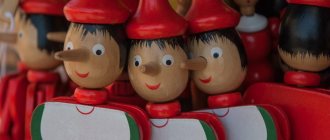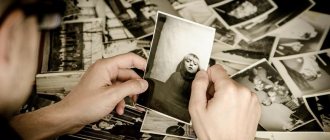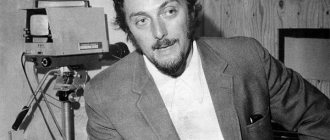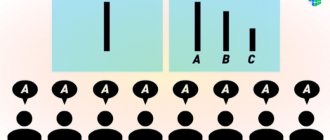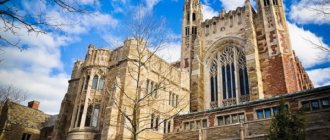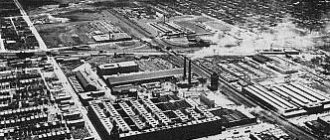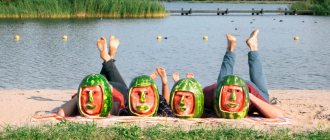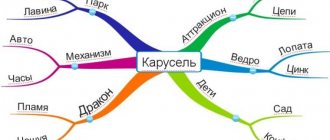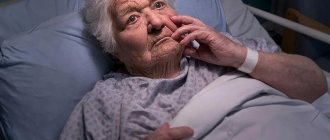Prerequisites for the study
In the 60-70s of the last century, Western countries were experiencing a baby boom, and many began to think about the overpopulation of the Earth and the lack of resources. It was an era of crisis, and questions of rapid human population growth worried biologists, sociologists and anthropologists.
Various new and rapidly accelerating processes have been noticed in society, such as urbanization. Moreover, mostly wealthy people were concentrated in the cities, while the poor lived outside the city. Population density increased, and with it social tension increased. In this regard, large amounts of money were allocated for programs to study the consequences of overpopulation.
Calhoun began his career as a zoologist and continued as a psychologist and ethologist. He worked at Johns Hopkins University. His main activity was observing rats, first in the natural environment (1947 - 1949), and then in artificially created ones (1958 - 1962) with the aim of studying the ecology of rodents.
Even in his first experiments, he noticed that in conditions of overpopulation, rats tended to behave aggressively; the strongest males took all the females for themselves and attacked the weaker ones, and they, in turn, demonstrated deviant behavior, refusal to reproduce, or promiscuous sexual activity , even cannibalism (eating baby rats), and in conditions of abundance of food.
Calhoun was very interested in the future of human society, which, with the development of civilization and the overpopulation of the earth, despite the increase in living standards, became increasingly unpredictable. He was worried about whether a terrible future awaited people: struggle for resources, anarchy, violence and the like. He decided to conduct his experiment on laboratory mice - animals that are social and quite smart, as well as accessible and very fertile. It was not difficult to create ideal conditions for them.
The experiment was called "Universe 25". The number represents the 25th attempt to create a model of “heaven on earth.” Calhoun conducted it from 1968 to 1972. in collaboration with the National Institute of Mental Health (NIMH). The purpose of the experiment: to study the effect of overpopulation on the behavioral patterns of animals.
Mouse Hell
Ideal living conditions for mice
Gradually, the hunted young began to lose the desire to protect females and mate. The behavior of the females also changed. Having lost the protection of exhausted males, they themselves became aggressive. Now protecting their offspring has become an overwhelming burden for them. It came down to cannibalism. The females devoured their own cubs and went into a mouse monastery - they moved to the upper nests and refused to reproduce.
Against this background, homosexuality flourished. The bitten males mated with equally unfortunate males, and the females mated with females. And yet, in the mouse paradise there were still individuals who desperately resisted the general madness and continued to fight for the survival of the species.
Artificial paradise for mice: conditions and stages
The “Universe” was a large square pen with a side of 2.57 m and a wall height of 1.37 m, with 256 nest boxes for rodents. The upper 43 cm of the walls were made of galvanized steel. Each wall was divided into 4 segments with a side of 64 cm. The segments, in turn, were divided into 4 tunnels, each of which had 3 nests, sufficiently large for a female and a litter of 15 mice. The width of the tunnels was 7.6 cm. Each segment was equipped with a feeder and drinkers.
There was enough water and food in the pen, and supplies were constantly replenished. The inside was regularly cleaned, a comfortable temperature was maintained, the mice were vaccinated against possible infections, and their health was monitored by veterinarians. There was also no danger, as was the possibility of getting out of the pen. In July 1968, the first 4 pairs of mice were placed in the pen.
The mouse population went through several phases in its development:
- A. Birth of the first offspring.
- B. Increased reproduction, exponential growth in numbers (the number of mice doubled every 55 days);
- C. Slowdown in population growth. Starting at day 315, the number of mice only doubled every 145 days. By this time, the population numbered 600 individuals, which led an active social life and had already begun to divide into hierarchical groups.
- D. Death phase, the appearance of a group of mice that are called “beautiful”.
According to preliminary calculations by scientists, there should have been enough space in the pen for 3840 mice, food for 9500 and water for 6144 individuals consuming simultaneously. However, the size of the mouse population has not reached this number. The maximum number was 2200 individuals, after which the population began to decline—extinction. The experiment was completed in 1972, when there were only 122 mice left in the pen, already past reproductive age, so the outcome was crystal clear.
Who is this - John Calhoun
John Calhoun, an American ethologist loved rodents. He believed that a rat is not much inferior to a person in intelligence, and the community of rats in its development almost completely copies the human community.
In experiments, Calhoun created different living conditions for separate groups of rats and observed how they responded to different life situations that he created for them.
The researchers didn’t miss him either:
Studying the processes and trends that arose in this small isolated colony, he compared them with people who could act in a similar way under similar circumstances.
Having carried out this 24 studies, Calhoun began his 25th, most successful and famous experiment.
A tank measuring 2x2 meters and a height of one and a half meters was built for the mice. It was designed for a huge number of mice - almost 4,000 of them could live there in complete comfort.
256 nests were built, and a supply of building materials was created if the mice wanted to build houses themselves. No cats, dogs, owls, foxes and other urban and forest brethren. In theory, the colony could live long and prosper forever.
The emergence of social inequality
During Stage C of the experiment, a certain lack of space began to be felt in the pen. There were a lot of mice, and they began to divide into separate social groups, each of which received its own name.
- The “outcasts” were weaker individuals who were banished by the mouse community to the inconvenient central part of the pen. All other mice showed aggression towards them. They were distinguished by torn out shreds of fur, traces of blood, and bitten tails. These were young mice, according to Calhoun, who did not find a place for themselves in the hierarchy, since with increasing life expectancy, older mice did not make room for their young relatives. The “old men” attacked the young ones and defeated them thanks to their great experience, and the young males broke down psychologically. They no longer protected the pregnant females, and they became increasingly nervous.
- “Feminists”, or lonely females - abandoned by males, were forced to protect the cubs themselves, and in the end they showed aggression not only towards other males, but also towards their own offspring, or even refused to reproduce at all. The birth rate in the population has fallen, and mortality among young animals has increased to a critical level.
- "Handsome" or "handsome" are young males who have shown no interest in reproduction or social life. They did not fight for territory and females, they led a passive lifestyle - they ate, slept and preened their fur.
Calhoun also wrote that homosexual behavior was observed among rejected males and females. At the same time, the “beautiful” mice made no attempts to interact at all.
In the last generation of mice, most of the young individuals were passive “handsome mice” and lonely aggressive females who did not want to reproduce. At the last stage of the experiment, the average age of the mouse was 776 days, which is 200 days more than the reproductive age limit. Pregnancies disappeared, and there were no young individuals left; their mortality rate was 100%.
In 1972, shortly before the end of the experiment, Calhoun moved several single females and "beauties" into a separate pen, essentially creating ideal breeding conditions for them, as they were in the beginning. Despite improved conditions, the mice did not make a single attempt to reproduce and subsequently died of natural causes. The last inhabitant of the “mouse paradise” died on the 1780th day of the experiment.
Results
The experiment demonstrated an interesting paradox. Improving the living conditions of rats did not lead to the maximum filling of the territory, but to the destruction of the population. Calhoun considered the key point in this situation to be a decrease in mortality and an increase in life expectancy: old males, who enjoyed life and pushed younger ones out of the social space, including their own children, themselves launched the mechanism of death of their community.
Exactly the same outcome, according to Calhoun, awaits humanity, which has embarked on the path of civilization. It turns out that raising the standard of living, developing medicine and education, abandoning wars and violence in general, and limiting the birth rate is the path to the destruction of humanity. Evidence of the decline of humanity, according to his theory, is the appearance in society of a large number of childfree and homosexual people. And attempts to eliminate violence lead to the opposite result - an increase in aggressive behavior, including towards children.
Calhoun's Conclusions: "Death of the Spirit"
Calhoun called the transition to destructive behavior in conditions of overpopulation a “behavioral sink”, and called the collapse of society, with a reference to the Revelation of John the Theologian, “death squared” - “double death”, or “death squared”. In his opinion, mice experienced the “first death,” or death of the spirit, while still alive, returning to the simplest behavior. The “second death,” biological, leading to the complete extinction of the species, was an inevitable consequence of the first.
“Their (mice) “spirit” (the so-called “primary death”) dies at the moment of severe nervous shock. Further, mice can no longer overcome difficulties of such a scale that would be comparable to the task of surviving or finding ways to survive for an entire colony. Such species are doomed to mass death, since spiritual death is immediately followed by physical death.”
Drawing an analogy with human behavior, Calhoun gave his own explanation for the appearance of “beautiful” individuals. He believed that a person was “created to live under stress”; he must constantly overcome the pressure and tension of the surrounding world and accept its challenges. Calhoun explicitly hinted that in modern society there are already enough men and women who have chosen a refusal to fight and a primitive, consumer existence in eternal pleasure and narcissistic narcissism. He believed that all this inevitably leads to the degradation of human society and the subsequent death of civilization.
From Calhoun’s experiment it followed that “paradise” conditions contribute to longer life expectancy, which means that there are more elderly individuals, and they interfere with the self-realization of young people. As a result, aggression and hostility grow in society; in the end, people refuse to procreate and choose a selfish life, where everyone is for himself. The “spiritual death” of people, according to the scientist, turns them into a kind of biorobots who are only interested in satisfying physiological needs.
In the mid-70s, Calhoun convened an international conference on overpopulation problems, where several reports of very gloomy, apocalyptic content were read. However, the conference did not create a big public outcry, since the world was already gripped by another problem - the impending energy crisis due to a shortage of oil. Gradually the problem lost its severity and relevance. But now, 50 years later, people are beginning to be interested in it again. Some even claim that we ourselves are already experimental subjects of Universe-25.
Bibliography[edit | edit code]
Books[edit | edit code]
- Calhoun, John. Crowding and Social Behavior in Animals. — Anchor Books, 1947-1948.
- Calhoun, John. Environment and Population: Problems and Adaptation: An Experimental Book Integrating Statements by 162 Contributors. - Praeger, 1983. - P. 486. - ISBN 0-275-90955-7.
Articles[edit | edit code]
- Calhoun, John. The Study of Wild Animals under Controlled Conditions // Annals of the New York Academy of Sciences. - 1950. - Vol. 51. - P. 113–22.
- Calhoun, John. The Social Aspects of Population Dynamics / American Society of Mammalogists // Journal of Mammalogy. - 1952. - Vol. 33, no. 2. - P. 139–159. — DOI:10.2307/1375923. - JSTOR 1375923.
- Calhoun, John. A Behavioral Sink // Roots of Behavior / ed. by Eugene L. Bliss. - New York: Harper & Brothers, 1962. - Ch. 22.
- Calhoun, John. Population density and social pathology // Scientific American. - 1962. - Vol. 206, no. 2. - P. 139–148. - PMID 13875732.
- Calhoun, John. Plight of the Ik and Kaiadilt is seen as a chilling possible end for Man // Smithsonian Magazine. - 1972. - Vol. 3. - P. 27–32.
Criticism of the experiment
Various conclusions can be drawn from Calhoun's experiment, including very convenient ones for the creation of ideologies that allow people to be controlled, and religious organizations. Ultimately, these findings may lead to aggression towards various segments of the population, such as the elderly, childless or homosexual people. You can also come to the dangerous conclusion that a well-fed and comfortable life leads to various vices and degeneration. This means that we need to keep people in a “black body”, control people’s lives and limit their freedom.
However, the shortcomings of Calhoun's own conclusions lie on the surface. We can say that they are obvious to any observer with critical thinking.
- First of all, we are not mice. Humans are much more highly organized creatures with disproportionately more complex behavior. Therefore, you cannot simply transfer the behavior of mice to humans.
- Secondly, no one creates ideal conditions for people. Until now, too many people live in conditions of that same struggle and overstrain; people are threatened by diseases, wars, natural disasters and man-made disasters. So it’s premature to talk about heaven.
- Thirdly, applying the biblical term “death of the spirit” to mice is strange, to say the least. If we turn to religion, then animals are considered endowed with an animal soul, but not with an immortal spirit similar to a human one.
- In the expulsion and death of “extra” individuals in a population, a mechanism inherent in nature—natural selection—is manifested.
But in addition, there is criticism of the experiment itself, its conditions as clearly unnatural for the life of mice and therefore leading to such disastrous consequences.
- If you pay attention to the design of mouse nests, the tunnel width of 7.6 cm allowed one male to easily control 4 nests at once. Thus, a strong male could immediately get a “harem” of 4 females, keep other males away from the food and force them to leave. In nature, such a ratio, 4 females to 1 male, happens extremely rarely.
- Critics noted that maintaining a comfortable temperature in the summer, in the absence of very expensive air conditioners at that time, was hardly possible. In addition, cleaning was carried out quite rarely - every 4-8 weeks. So the living conditions of the mice were not so rosy: heat, mountains of droppings and the remains of rotting food, decaying corpses of killed or deceased individuals. Undoubtedly, under such conditions the mice must have experienced severe stress.
- It is possible that the first experimental mice were closely related to each other. Special selection of mice genetically suitable for crossing would have cost many times more, so, most likely, scientists saved money on this.
- If you carefully reread the course of the experiment, you will notice, in addition to signs of a possible closely related relationship, that the mice did not begin to reproduce immediately, much later than the usual breeding time for vivariums. The delay was 2.5 months. The reason could be either stress or rejection of the males by the females - they could drive the “brothers” away from them by biting them. Calhoun himself wrote that this time was “characterized by considerable social tension between the eight mice until they became accustomed to each other and to the environment,” which also does not happen in conventional vivariums.
- Perhaps the mice really did not have enough space, since many males could easily defend 4 nests and a feeder with a single female. That is why many mice were forced to live in the center of the pen, in very uncomfortable conditions - among dirt, without shelter and in a constant struggle for food and water.
- A large number of females, both old and young, gathered in harems. And mice have a biological feature: if 10 or more females get together, their menstruation stops. In addition, the males protecting the nest have already aged and have lost the ability to reproduce. This is a simple explanation why the birth rate of mice began to decline.
- In fact, no “homosexual” mice were observed in the experiment, only “homozygous” ones.
- Those mice that Calhoun separated at the end of the experiment were already too old to reproduce. The youngest of them was 480 days old, and the mouse's fertility ends at 560 days.
We can say that the experiment does not even particularly need criticism, since it is obvious that the conclusions transferred from the mouse population to the future of humanity are clearly far-fetched. In addition, although the human population is growing steadily, it is still too early to talk about overpopulation of the planet.
Consequences of the experiment
Calhoun's experience and conclusions were very warmly received by conservative Catholics. In 1974, he even met the Pope in person. However, the scientist himself, oddly enough, did not share these conservative views. He did not agree that the only solution was to limit the reproduction of the human population. He was also very upset that his research became material for speculation by pessimists, and not an incentive for development and search for a way out.
Although the experiment itself could not be called successful, Calhoun drew unexpectedly useful conclusions from it. Firstly, those mice that had more established social contacts survived in overcrowded conditions. Those individuals that remained outcasts had no choice but to become more creative and invent various “innovations” for their survival.
And this gave me hope. Calhoun devoted his later career to the quest to overcome the effects of overpopulation on the planet through innovation. He also contributed to the colonization of space as part of the interdisciplinary group "Space Cadets".
Calhoun's experiment was the subject of a children's book, Mrs. Frisbee and the Rats of NIMH, by Robert C. O'Brien. Unlike the real-life experiment, the book is about a colony of super-intelligent and independent rats that escaped from the National Institute of Mental Health.
Based on the experiment, the concept of proxemics by Edward Hall was subsequently created - this is an area of social psychology and semiotics that studies spatial and temporal sign systems of communication, in particular, personal space and distances between participants in communication. The concept of the “behavioral sewer” has influenced the development of urban sociology and psychology, as well as the study of aggression.
A description of the Universe-25 experiment can often be found on social networks with comments from concerned users, which usually concern “idle youth”, “homosexuals corrupting society”, and the reigning depravity and violence in the world. However, the groundlessness of such conclusions becomes obvious if you look at the experiment with even a slightly critical eye.
Gloomy apocalyptic pictures of “heaven becoming hell” can frighten overly impressionable readers. But our society and the social interactions of people are much more complex than the life of mice in a closed artificial pen. Perhaps heaven on Earth does not shine for us, but while we are all alive, we all have the opportunity to change something. And no matter what they say, as long as there are reasonable, critically thinking people in society, spiritual death does not threaten humanity.
